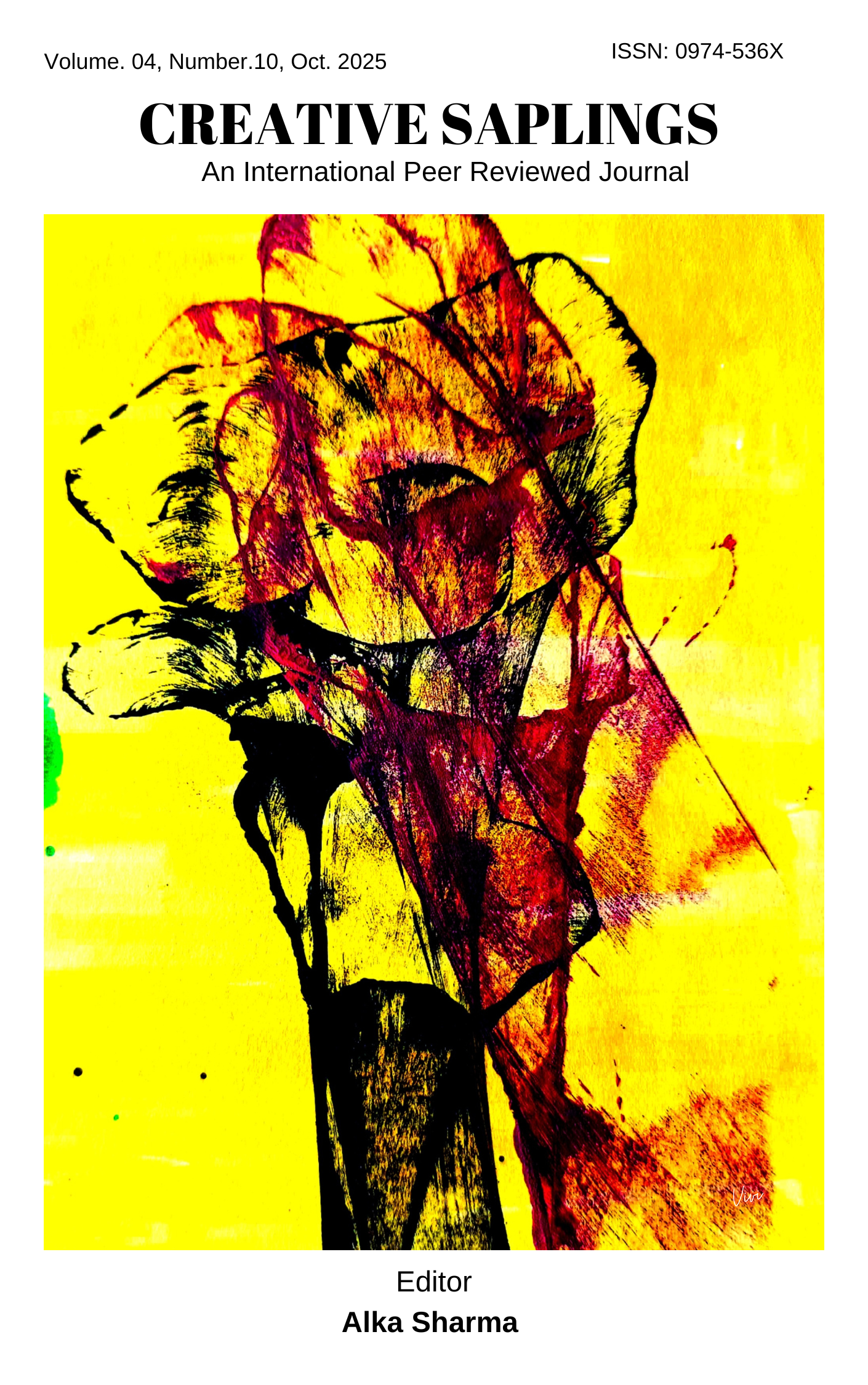Navigating Guilt: An Examination of the Phenomenon of Guilt in Jerry Pinto’s Em and the Big Hoom
DOI:
https://doi.org/10.56062/gtrs.2025.4.10.1061Keywords:
Guilt, Mental Illness, Family Systems Theory, Schizophrenia, Bipolar DisorderAbstract
Guilt is a recurring undercurrent in Jerry Pinto's Em and the Big Hoom. This moving story explores the daily realities of a family which is dealing with mental illness and struggling with the complex and frequently debilitating sensation of guilt. A psychological crisis in a family and the concomitant emotional and mental conundrums eventuate in an insulated existence with parochial concerns as an inevitable outcome of it. The precarious existence that a family is forced to live, engulfed in the quagmire along with the victim and encumbered by the impairing depressive episodes, is the subject of this paper. Drawing on ideas like survivor's guilt, maladaptive guilt, and the inherited emotional burdens within dysfunctional family systems, the intricacies of emotional inheritance and self-blame are examined through Pinto's candid depiction of a family dominated by the mother's bipolar illness and the father's silent fortitude.
Downloads
References
Broerman, Rebecca. “Diathesis-Stress Model”. Encyclopedia of Personality and Individual Differences, edited by V. Zeigler-Hill and T. K. Shackelford, Springer International Publishing, 2017, pp. 1–3. DOI: https://doi.org/10.1007/978-3-319-28099-8_891-1
Bowen, Murray. “A Family Concept of Schizophrenia”. The Etiology of Schizophrenia, Basic Books, 1960, pp. 346–372, https://doi.org/10.1037/10605-012. DOI: https://doi.org/10.1037/10605-012
Cochrane, J. J., et al. “The Mental Health of Informal Caregivers in Ontario: An Epidemiological Survey”. American Journal of Public Health, vol. 87, no. 12, American Public Health Association, Dec. 1997, pp. 2002–2007, https://doi.org/10.2105/ajph.87.12.2002. DOI: https://doi.org/10.2105/AJPH.87.12.2002
Docherty, N. M. “Communication Deviance, Attention, and Schizotypy in Parents of Schizophrenic Patients”. Journal of Nervous and Mental Disease, vol. 181, 1993, pp. 750–756. DOI: https://doi.org/10.1097/00005053-199312000-00007
Hayes, L., et al. “Quality of Life and Social Isolation Among Caregivers of Adults with Schizophrenia: Policy and Outcomes”. Community Ment Health J, vol. 51, 2015, pp. 591–597. DOI: https://doi.org/10.1007/s10597-015-9848-6
Pinto, Jerry. Em and the Big Hoom: A Novel. New York, Penguin Books, 2014.
Robertson, W. J. “The Concept of Guilt”. Journal of Psychosocial Nursing and Mental Health Services, vol. 32, no. 1, SLACK, Inc., Jan. 1994, pp. 15–18, https://doi.org/10.3928/0279-3695-19940101-06. DOI: https://doi.org/10.3928/0279-3695-19940101-06
Smith, Jim. “ Bowen Family Systems Theory.” The Systems Thinker: Center for Family Consultation Blog, 25 Jan.2018.
Watson, W. H. “Family Systems”. Encyclopedia of Human Behavior, Elsevier, 2012, pp. 184–193, https://doi.org/10.1016/b978-0-12-375000-6.00169-5. DOI: https://doi.org/10.1016/B978-0-12-375000-6.00169-5
Downloads
Published
Issue
Section
License
Copyright (c) 2025 Ambika Madhur, Prof. Shailendra P. Singh

This work is licensed under a Creative Commons Attribution-NonCommercial 4.0 International License.





